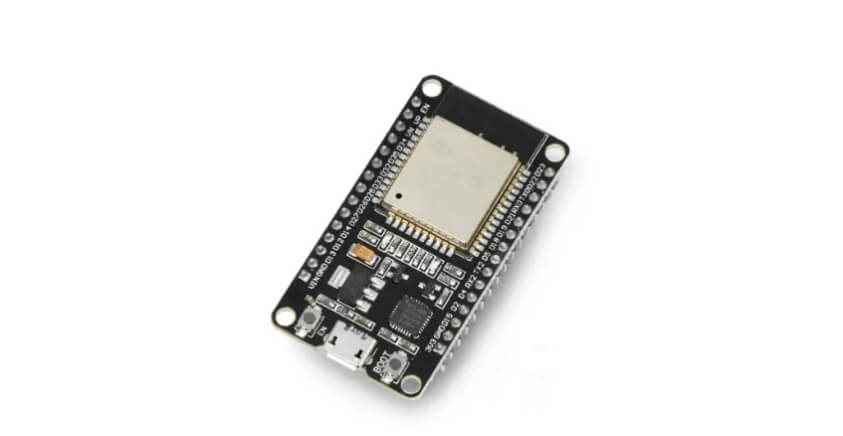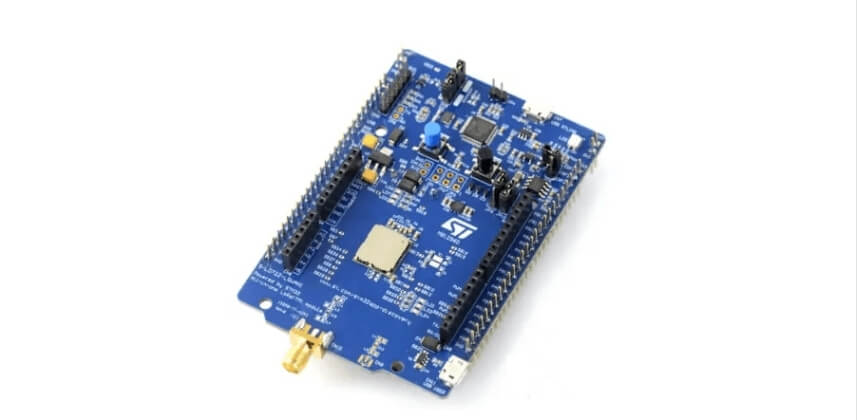Writer: adminRelease Time: 2025-05-14 07:39Browse: 2964

ESP32 is a chip microcontroller series integrated with dual-mode Wi-Fi and Bluetooth. On the other hand, STM32 is a series of 32-bit microcontrollers launched by Stmicroelectronics. Although both adopt 32-bit architecture, the discussion about their relationship, performance differences and advantages continues. Which is superior, STM32 or ESP32? This article provides a detailed comparison to help you make an informed decision!

1.What is ESP32?
Developed by Espressif Systems, ESP32 is a powerful Wi-Fi chip that runs at a maximum frequency of 230 MHz, uses a 40nm process, and has a dual-core 32-bit MCU. The chip supports dual-mode Wi-Fi and Bluetooth in the 2.4 GHz band, with a computing power of up to 600 dmips. Its advanced features include dynamic voltage scaling, multiple energy-saving modes, and precise clock gating technology. ESP32 integrates various components such as power amplifiers, low-noise amplifiers, filters, power management modules, antennas, and RF Baluns, designed for reliability and ease of manufacturing, operating in a wide temperature range of -40°C to 125°C It supports multiple communication protocols including I2C, I2S, SPI, and UART to meet various application needs.

2.What is STM32?
STM32 is produced by STMicroelectronics and represents a series of microcontrollers, where "ST" stands for STMicroelectronics, and for microcontrollers, "M" and "32" refer to its 32-bit CPU structure. These microcontrollers are built around ARM's Cortex-M series processors, including various models such as Cortex-M0, M0+, M3, and M7. The STM32 series is divided into several sub-series, notably the STM32F101 and STM32F103 series. The STM32F101 runs at 36 MHz, while the STM32F103 series runs at a higher frequency of 72 MHz. The latter offers enhanced features with more RAM and peripherals, providing important advantages for more complex applications.
3.ESP32 Features and Specifications
Processor Features:
The STM32 microcontroller is equipped with an Xtensa processor that can be configured as a dual-core or single-core unit. The processor operates at a clock speed ranging from 160 to 240 MHz. It is designed for efficiency and features 320KB RAM and 448KB ROM to optimize performance and storage capacity.
For applications that require ultra-low power consumption, the microcontroller incorporates an ultra-low power (ULP) processor.
Connectivity Options:
Connectivity is the strength of the STM32 microcontrollers:
Bluetooth: It supports Bluetooth v4.2 br/edr, enabling reliable and robust wireless communication.
Wi-Fi: The inclusion of Wi-Fi 802.11 b/g/n ensures that the microcontroller can seamlessly connect to the Internet and other network devices.
Peripheral Interfaces:
The STM32 supports a wide range of peripherals, making it highly versatile:
It features a 12-bit SAR ADC capable of processing up to 18 channels, providing high-precision analog conversions.
The microcontroller includes 34 programmable GPIO pins.
It features dual 8-bit DACs, dual I2C interfaces, and dual I2S interfaces.
Other interfaces include CAN BUS 2.0, Ethernet MAC interface with time protocol support, and infrared remote control.
The microcontroller also supports up to 16 motor PWMs and LED PWMs.
It includes a Hall effect sensor interface, expanding its usefulness in magnetic field detection.
4.STM32 features and specifications
Processor:
At the heart of the STM32 microcontrollers is the ARM Cortex-M4F processor. The processor runs at clock speeds of 84 MHz or 100 MHz, extending up to 168 MHz or 180 MHz for more demanding applications. The range enables users to select the appropriate speed for their specific processing needs, effectively balancing power consumption and performance.
Memory:
General memory: The microcontrollers are equipped with up to 192 kb of general-purpose static memory, suitable for storing application data and operating instructions.
Core-coupled memory: An additional 64 kb of core-coupled memory provides faster access times.
Battery-backed memory: There is also a small portion of battery-backed memory, up to 80 bytes, to ensure reliability for applications that require data persistence.
Flash storage:
The STM32 microcontrollers offer a variety of flash storage capacities - 512 KB, 1024 KB or 2048 KB, providing enough space for complex applications. In addition, the boot memory can accommodate up to 512 data stores, which is critical for the initial load and execution of the system.
Peripherals:
The STM32 is equipped with a wide range of peripherals, making it highly versatile and suitable for different purposes:
USB Interfaces: It incorporates USB 2.0 OTG (On-the-Go) and FS (Full Speed), allowing direct connection and fast data transfer with other USB devices.
Communication Protocols: The CAN 2.0B interface supports robust vehicle communication standards, while multiple I2C interfaces can connect to a variety of low-speed peripherals such as sensors and small displays.
Storage and Serial Communications: It supports USART for serial communications, SDIO for secure data input and output, and three slots for SD/MMC cards, facilitating extensive data logging and storage.
Timing and Sensing Peripherals: Advanced peripherals such as precise timers, supervisory timers to prevent system failures, temperature sensors to monitor device heating, DMA for efficient data management, and CRC for error checking ensure smooth and reliable operation.
5.ESP32 vs STM32: What are the differences? Which one is better?
ESP32 and STM32 microcontrollers serve different purposes and excel in different applications, each offering unique features tailored to specific requirements. Here is a detailed comparison to help you understand their differences:
Application Areas
ESP32: Designed primarily for IoT and smart home applications, ESP32 is ideal for connecting and controlling devices over the Internet, thanks to its built-in Wi-Fi and Bluetooth capabilities.
STM32: This chip is widely used in industrial control systems, automotive electronics, and medical devices, where robustness and extensive input/output capabilities are critical.
Processor Architecture
ESP32: Features a dual-core processor architecture with 1 high-performance CPU and 1 low-power CPU, ideal for applications that require efficient power management without sacrificing performance.
STM32: Typically adopts a single-core or multi-core architecture, providing powerful computing capabilities for complex algorithms and processing tasks.
Main Features
ESP32: Integrates Wi-Fi and Bluetooth connectivity directly on the chip, supporting a variety of power saving modes to extend the battery life of connected devices.
STM32: Lacks the native connectivity capabilities of the ESP32, but has superior computing power and a wider range of peripheral interfaces (such as USB, CAN, and Ethernet ports), enabling it to manage more complex applications.
Development Complexity
ESP32: The inclusion of Wi-Fi and Bluetooth, as well as a comprehensive SDK and development toolchain, simplifies the development process, making it easier to implement features without extensive hardware expertise.
STM32: Due to the lack of integrated communication technology, it generally requires more complex programming and setup, requiring more time and technical knowledge from developers.
Cost
General Pricing: The cost of the ESP32 is generally lower than that of the STM32, making it cost-effective for developers focusing on connectivity-based projects.
High-end Models: Some advanced versions of the ESP32 (for example, using LoRaWAN) may cost more than some STM32 models, reflecting the additional communication features they offer.
Although the ESP32 is a preferred alternative for the student population due to its cost-effectiveness, from a product selection perspective, there is no perfect replacement. There are multiple factors to consider when choosing, and it is unrealistic to think that one can completely replace the other. Both ESP32 and STM32 are widely used microcontrollers, each with its own unique strengths and weaknesses.
6.ESP32 vs. STM32: Comparison of Advantages and Disadvantages
| Feature | ESP32 | STM32 |
| Applicable fields | Excellent output in industry Increased reliability | Excellent output in industry Increased reliability |
| Cost Advantage | Affordable overall development costs combined with outstanding performance | Prices keep growing |
| Arduino environment support | Not too difficult to program, strong open source community | A bit challenging at first, high learning curve |
| Built-in Bluetooth and Wi-Fi | Bluetooth and Wi-Fi integration reduces the cost of additional modules | / |
| Dual-core processor | Allows real-time multi-threaded processing | / |
| High speed main frequency | Higher processing speed and computing power Up to 240MHz | / |
| Pure hardware debugging | Very simple hardware debugging, which makes development easier | Although there is a simpler debugging toolchain |
| Shortcoming | / | / |
| Limited Pins | Relatively few pins, making it less suitable for projects that require a large number of IO ports | / |
| Complex debugging toolchain | Complex toolchains require a thorough understanding of compilers and command-line tools | / |
| Slow assembly process | Compiles faster than some other options | Efficient compilation, but the cost is increased |
| Debugging Complexity | Somewhat difficult to debug and software breakpoint limitations | Simpler debugging toolchain, but more expensive hardware debugging |
| Affordable overall development costs combined with outstanding performance | / | Efficient burning and compilation |
7.ESP32 vs. STM32: Equivalents/Alternatives
| ESP32 | STM32 |
| raspberry pi pico | GD32 Series (gigadevice) |
| STM32 Series | Nuvoton (Digital) Series |
| Arduino NEO | Microchip PIC32 Series |
| teenager | Silicon Labs EFM32 Series |
| NRF5XXXX | Texas Instruments MSP430 Series |
| Other ESP versions |
8.Which software is used to program the ESP32?
ESP32 microcontrollers can be programmed using a variety of software platforms, with Arduino IDE and Micropython being particularly popular choices among developers. Each tool caters to different programming needs and preferences, simplifying the development process for a wide range of applications.
Programming with Arduino IDE: Arduino IDE is an open-source integrated development environment that supports C++ programming. It is known for its user-friendly interface, making it easily accessible even to programming novices. Developers can leverage official Arduino resources and a large number of existing libraries as well as sample code provided by various third-party contributors to get started quickly. The environment is built for easy debugging and rapid development, greatly speeding up the process from concept to prototype. Arduino IDE allows the code to be customized and extended through additional libraries that can be seamlessly integrated to enhance functionality or add new features.
Programming with Micropython: Micropython, on the other hand, is a Python 3 implementation designed specifically for microcontrollers. It allows you to write Python scripts for embedded systems that are resource-constrained and require low power. Micropython stands out for its simplicity and clarity, making it a preferred choice for programmers who value Python's readability and straightforward syntax. It is an ideal platform for those who want to take advantage of Python's concise programming style to develop for devices such as the ESP32 that have limited storage and processing capabilities.
FAQ
1. Is STM32 better than ESP32?
Both STM32 and ESP32 are equipped with comprehensive integrated peripherals, including GPIO, ADC, DAC, TIMERS, TIMERS, UART, I2C, and SPI. It is worth noting that STM32 tends to provide enhanced flexibility and control, up to 140 I/O pins compared to ESP32's 40 pins. In addition, STM32 also provides more advanced timers, multiple ADCs and DACs, hardware encryption acceleration, and various other supplementary features.
2.What is the lifespan of ESP32?
In theory, there is no inherent component wear in ESP32.
3.Is ESP32 industrial grade?
Yes, ESP32 is an industrial grade expansion board designed for applications in industrial environments.